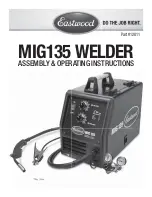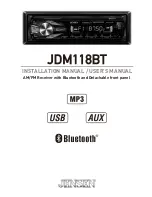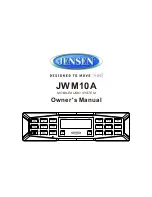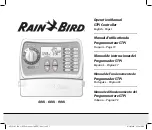
Chapter 1
_____________________________________________________
Zaxcom Nomad User’s Manual
20
most natural sound available in a location mixer/recorder. The input architecture uses a transformer free design.
Transformers contribute a large quantity of low frequency distortion, something that is always undesirable.
In practical use, set the microphone inputs to peak between -20 dBFS and -10 dBFS, as is the case in any typical
mixer.
Nomad allows an input to exceed the typical 0 dBFS range by 20 dB without any risk of clipping. With 135 dB of
input dynamic range, 30 dB of headroom and a floating point mixing system, the need for any use of the trim
control during normal operation is eliminated. Faders are all that is needed to control the level of an input channel
mixed to an output channel or recorded track.
IMPORTANT:
(From Howy)
The user should be aware that an audio signal that is higher than full scale, while not clipping at the input, will
eventually clip at its destination (such as a 24bit WAV file or an output). Any input that is exceeding 0 dBFS
must eventually be brought down to an acceptable level by either a fader or a limiter/compressor. The
headphone system is specifically designed to insure that the user will hear any clipping that eventually takes
place in the unit, whether it is a disk bus or an output bus.
Input Limiters
When mixing for film and TV production, it is desirable to record audio with the widest possible dynamic range.
The problem is that actors can vary their performance in a way that is unexpected and cause input clipping and
limiter distortion. We designed Nomad so it is unnecessary to use trim controls and limiters to prevent input
preamp distortion, typical of unexpected high levels of audio.
Even though the traditional input limiter is not needed, a soft knee compressor is provided on each mic/line input ,
each output and each recorded bus.
Digital Inputs
Nomad has four AES input pairs with sample-rate conversion, allowing each input to have a different sampling-rate.
This is key on-location, where it’s not always possible to lock external AES sources.
Mixing
Nomad can mix sixteen inputs to eight output busses and record up to twelve tracks* on the internal CF card. The
mixer has infinite routing capability. Any input can be routed to any output pre-fader, post-fader, with or without
the phase inverted. The Mix-8 control surface can also be used to form an all digital location recording and mixing
package.
* Nomad-4 – max 4 tracks, Nomad-6 – max 6 tracks, Nomad-8 – max 8 tracks, Nomad-12 – max 12 tracks
Recording
The Nomad records to the Primary Card using the Mobile Audio Recording Format (MARF) II. MARF was
developed to be fault tolerant, ensuring that should power be lost while recording, ALL audio up to that point will
be recoverable. The MARF system, and its audio-centric operation, has eliminated several of the reliability issues
associated with FAT32 recording.
While the mirroring process is enabled, the audio files are copied to the Mirror Card, which is in standard FAT32
format.
Both the Primary and Mirror Cards are CF cards. CF cards were chosen because of their immunity to extreme
temperature and motion. The Mirror media can be given to Post or copied to any computer.
Metering
The Nomad provides metering of all input channels and output busses in eight different formats, based on user
preference. Channel metadata is superimposed on meters to aid in meter identification. Signal levels are color
coded to aid in rapid identification of overload conditions.
RF Interference Protection
The Nomad was designed from the ground up to operate in close proximity to sensitive receivers. Wireless
devices can coexist in the sound bag with the Nomad running from the same power source.
















































